The Review | V8 Equipment RAC 6.1 Enduro Backpack
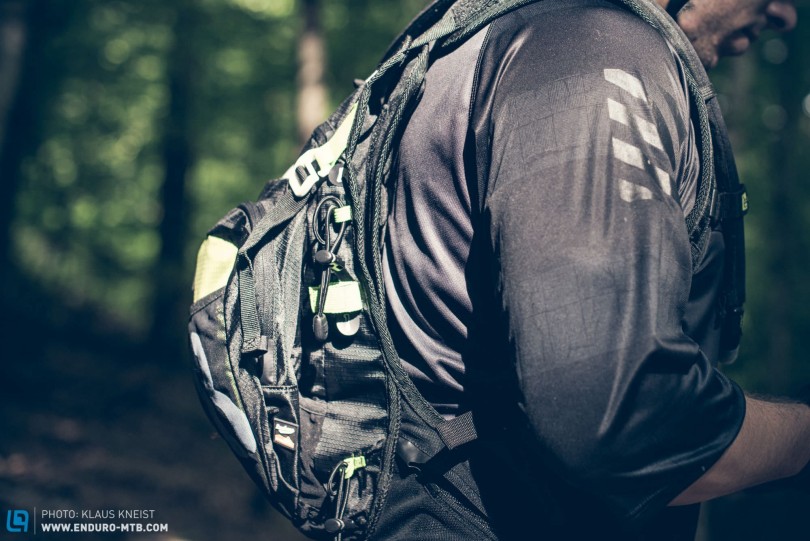
Whilst pretty much still unknown in Germany, French enduro riders can’t get enough of this. We’re talking backpacks – and more specifically, backpacks designed by the Provence-based V8-Equipment. A modular concept of a backpack and separate back protector, V8-Equipment have opted for an entirely different approach to other more established brands and retail their products at reasonable prices. We’ve tested the compact 6l model, the RAC 6.1, costing 59 €. Is this a concept that will take off?

The RAC 6.1 has a modular system, comprised of a backpack and back protector. These can either be worn individually or combined, and so that’s how we’ve tested them.
The backpack
From the first brush of the backpack the affordable price starts to make sense. The thin material seems to lack a certain je ne sais quoi, which leads us to worry about its lifespan. Moreover, there’s a hint of a chemical-like smell stemming from the backpack, but this disappears rapidly.
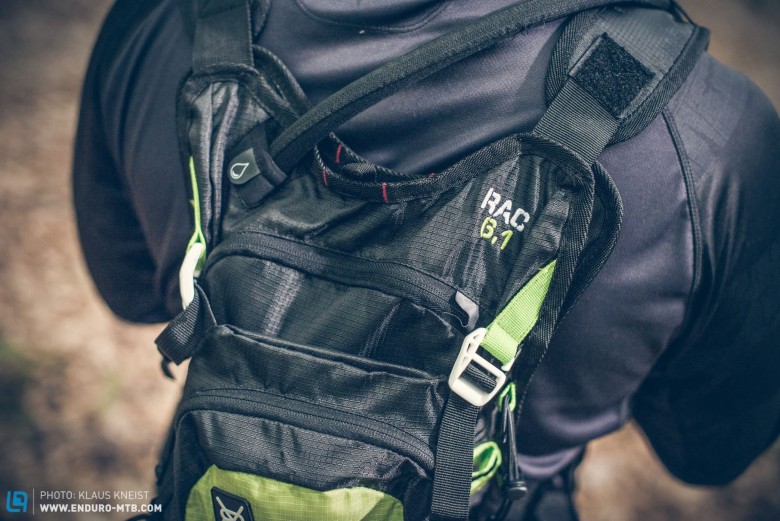
Upon opening the backpack there are plenty of well-divided compartments for your kit, including one specifically for a drinking bladder of up to 2.8 litres which can be securely fixed in. For a 6-litre capacity backpack, the interior of the RAC 6.1 is surprisingly spacious and can even be condensed with the helmet holder strap.
The helmet holder itself can take open or full-face helmets without any undue complications. There are also additional attaching options for an emergency whistle or a rain jacket. Just like the specific drinking bladder, these can be ordered directly from the online shop.
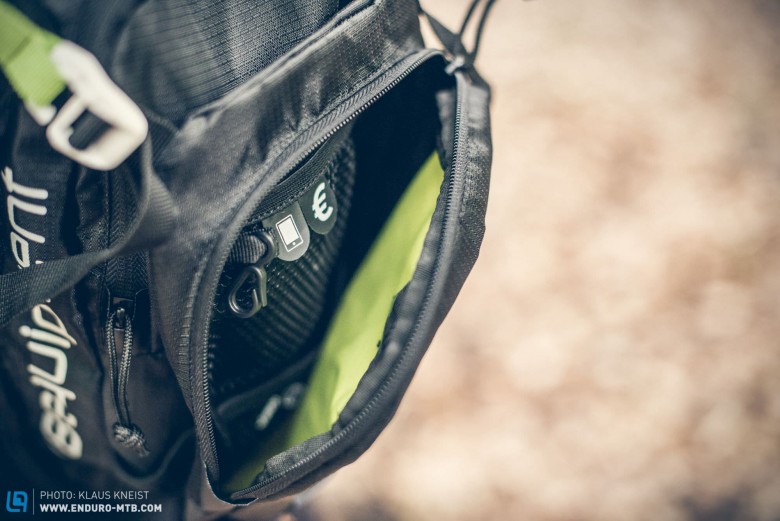
After a closer look at the back of the RAC 6.1, the standard of the finish betrays the affordability once again. The wide shoulder straps, connected with further simple straps to the rest of the backpack, frequently become twisted as you’re putting it on – an act that’s particularly irritating. However, it was the height and proximity of these to the neck that was most irritating on uphill sections as the day with ended with sore skin.

The RAC 6.1 backpack is pretty settled once you’re riding; although once the trails get a little rougher it tends to bounce up and down.
In terms of air ventilation and weight, the thin material chosen by V8-Equipment is a show of strength: barely weighing anything at just 550g, the ventilation is equally as pleasing.
The SBS136.1 back protector
Used individually or together with the backpack, the SBS136.1 protector’s interior consists of multiple layers of thick, elastic cushioning that harden upon crashing to absorb impact. As it meets the standards for protectors and adheres to the regular form, it can subsequently handle multiple crashes unlike hard shell protectors.
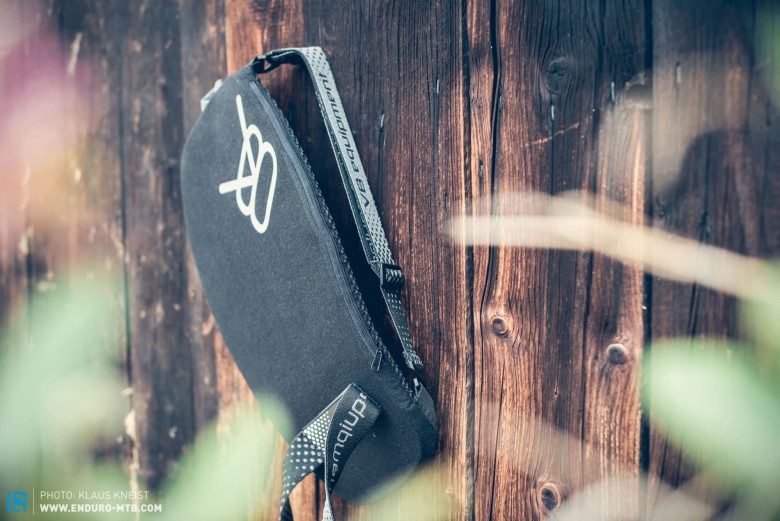
Given the two minimalist straps, the protector tends to ride up your back and bang against the bottom of your helmet. Like the backpack straps, these ones also run close to your neck and risk causing the same soreness.
The back protector comes in three well-proportioned sizes (S, M, L); the large fitted our 1.83m-tall test rider perfectly. The weight for the back protector alone is 750g.
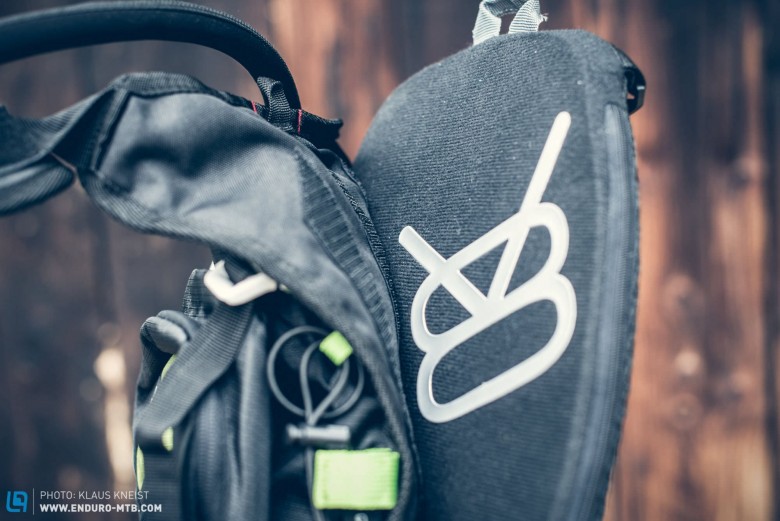
Combined use
Fixing the protector onto the bag requires the back section of the backpack to be removed and the protector then attached with Velcro. No matter what size the protector, it can be attached to the backpack as the protector is worn directly on your body and thus works more efficiently to absorb impact. The combo – backpack and the large protector – weighs in at 1300g.
While the combo sits more comfortably on your body than just the individual protector, it’s noticeably worse than just the backpack. The ventilation takes the brunt of said worsening, as air circulation is virtually non-existent due to the non-ventilated back protector. The result: a sweaty back.
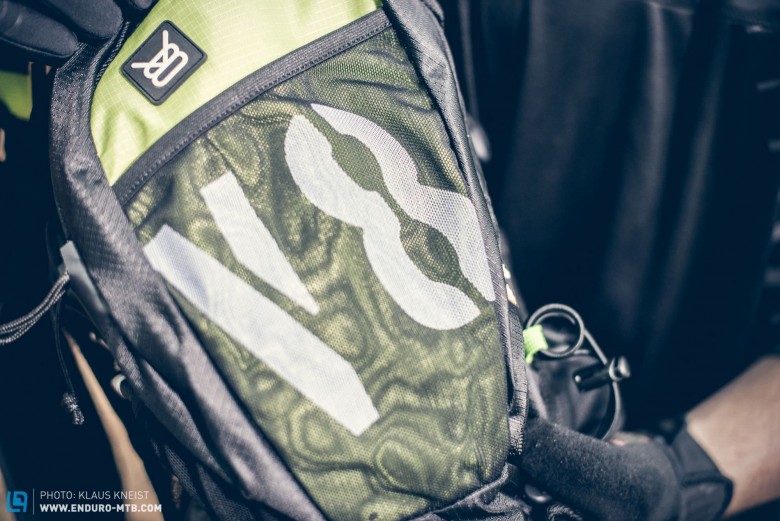
Upon picking up the bag it becomes apparent that the Velcro isn’t going to last very long. With a full backpack stuck to the protector, the Velcro struggles to remain tight as you lift the combo, but once firmly on your back the problem is contained thanks to the backpack straps, which trap the protector between the backpack and body.
Much like the issue with backpack on its own, the combo jiggles around on your back on rough ground.
Conclusion
For an affordable 59 Euro (98 Euro including protector and drinking bladder) you’ll get a versatile and lightweight riding backpack with great compartments. The modular concept of the V8 RAC 6.1 is pleasing, but it still needs some fine-tuning. The cheaper finish and the less-than-perfect sit of the backpack are perhaps reasons behind the affordability – but the good news is that the manufacturers offer a two-year guarantee.
More Info: v8-equipment.com / trailtoys.de
Words: Martin Stöckl Pictures: Klaus Kneist
Did you enjoy this article? If so, we would be stoked if you decide to support us with a monthly contribution. By becoming a supporter of ENDURO, you will help secure a sustainable future for high-quality mountain bike journalism. Click here to learn more.








